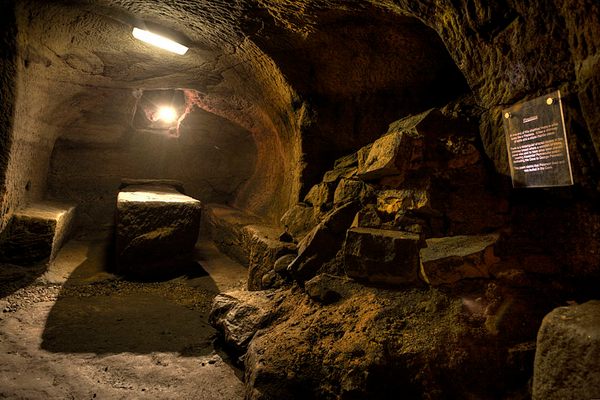Was this Scottish Cave Actually a Druid Temple?
A historian thinks he’s finally found the purpose behind centuries-old caves in Edinburgh.

Inside the Gilmerton Cove. (Photo: John Dale/CC BY-SA 2.0)
The mystery of the Gilmerton Cove, in Edinburgh, Scotland, has long perplexed historians, who theorized that it could have been any number of things: A secret drinking den for the upper class, a refuge for the religiously persecuted, a lair for smugglers, or even something to do with the Knights Templar.
The caves were discovered beneath a local blacksmith’s former shop, and records indicate that the blacksmith, identified as George Paterson, built the caves in 1724.
But a Scottish historian and former museum director in Glasgow thinks that’s hogwash.
The tunnels, Julian Spalding postulates, had been built prior to Paterson and then filled in by its original builders. Paterson merely dug it out, uncovering a network of caves that was thousands of years old.
“It is very probable that the whole complex was deliberately buried, a widespread ancient practice which prevented the subsequent defilement of sacred sites,” Spalding tells The Scotsman. ”This interpretation explains why two passages are still blocked by unexcavated rubble.”
And the identities of the people behind the tunnels? Maybe Iron Age-era druids!
“Druids were known to meet in secret in woods and caves away from habitation,” Spalding says.
Little is known about druids, an educated class of Celtic people said to have lived over two millennia ago. No archaeological evidence has ever been definitively tied to them.
If proven, Spalding says, the Gilmerton Cove would be the first.














Follow us on Twitter to get the latest on the world's hidden wonders.
Like us on Facebook to get the latest on the world's hidden wonders.
Follow us on Twitter Like us on Facebook